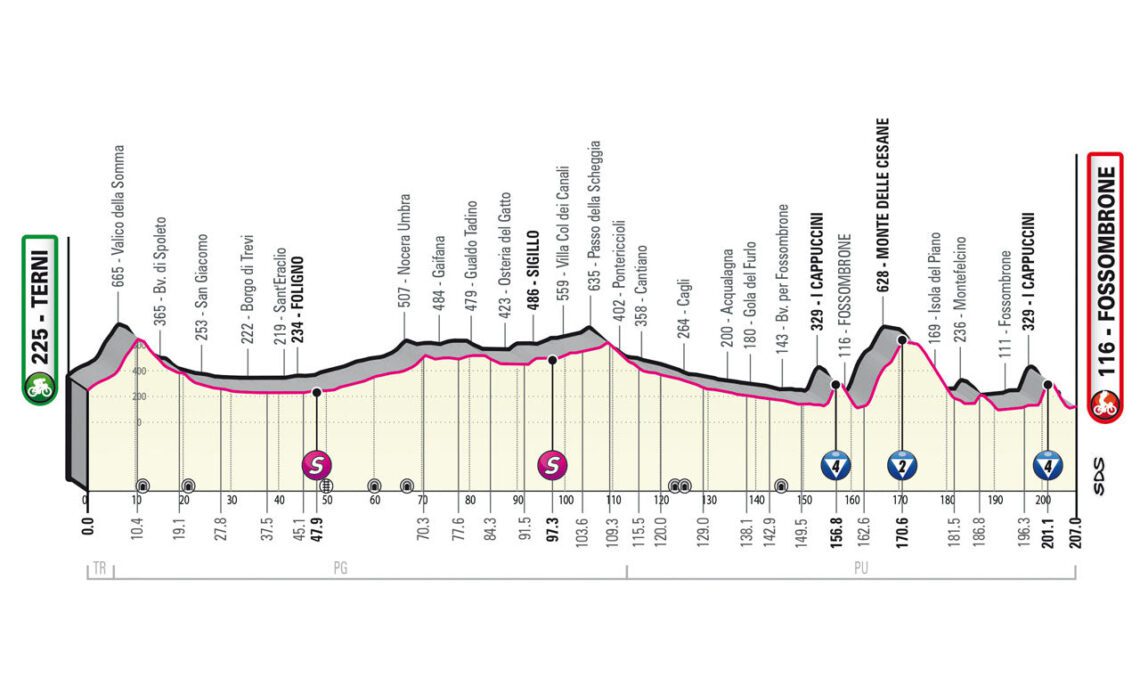Distance: 207km
Start location: Terni
Finish location: Fossombrone
Start time: 11:15 CEST
Finish time (approx): 17:14 CEST
The Via Flaminia is an ancient Roman road first constructed by the censor Gaius Flaminius during the 3rd century BC, that spans all the way from Rome to Rimini on the Adriatic coast. It’s a prime example of the carefully planned and expansive network of roads that helped connect the Roman empire, and many of the routes, including this one, are still in use today.
One of the towns on the Via Flaminia is Terni, which is where the peloton will set off from at the start of stage eight. Known as Interamna during Roman times in relation to its geographical location between two riders, Terni was an important municipium that was home to clergyman St Valentine in the third century AD — as in, the Saint Valentine now synonymous with roses and chocolates exchanged on February 14th, canonised by the Catholic church for his martyrdom at the hands of the Romans for aiding persecuted Christians. Terni isn’t exactly what you’d call a romantic getaway, however. It was heavily industrialised during the nineteenth century, so much that it was nicknamed The Steel City, and since then was heavily bombed during World War Two.
To complete Via Flaminia, the Romans had to figure out a way to get through the Apennine mountains, and in AD77 emperor Vespasian commissioned a tunnel to be built through the narrowest part of the Furlo Pass gorge. It’s an outstanding feat of engineering, which the riders pass through today on their way to their destination of Fossombrone, and one that is a triumph of efficiency, taming the geographical landscape for ease of access — something that the sport of cycling, by seeking out the hardest routes to get to places, can represent the opposite of.
Stage eight profile sourced on the Giro d’Italia website
The roads will be mostly flat as they head northwards from Umbria and into Marche, the first 140km up to the Furlo Pass, but upon passing through and into the finishing circuit in Fossombrone, the terrain gets much punchier. The Muro dei Cappuccini will be climbed twice, the second time crested just 6km from the finish, and in between will be the Monte delle Cesane. Although the vital numbers of either don’t look especially intimidating (the former last just 2.8km and averages 7.9%, the latter 7.8km at 6.5%), they don’t tell the full story, as both feature brief ramps that nearly touch 20%. These…

